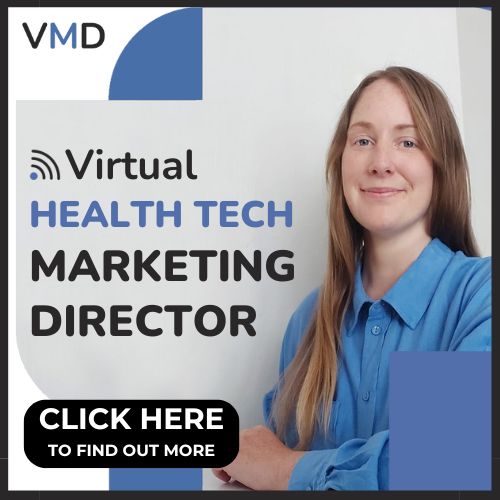By Martin Taylor, Deputy CEO of Content Guru
Delivering digitally-connected healthcare is complex. A key ongoing challenge is to provide more for less, with a particular focus on using technology-enabled efficiencies. Commissioners are acutely aware of this and are shifting from organisational-focused, to patient–centric, outcome driven models. Emerging technologies that provide a personalised service can help them deliver on this.
In the past
Previously, healthcare providers delivered premise-based, organisationally-focused solutions. The ill-fated National Programme for IT also saw development of a more centrally led technology-focused procurement strategy. While some of these changes had a positive impact, they failed to deliver every desired outcome. For example, the sharing of care records consistently and safely across health and care systems still remains a challenge, particularly at primary care level.
Reform is necessary
Previously, national and local teams focused on developing their own service specifications, with little regard to the expertise available throughout the supplier sector. Internal governance rules often prevented, and frequently still prevent engagement with industry and service users, in case of a future conflict of interest.
This approach has now begun to mature. The NHS is reorganising into broader sustainability and transformation partnerships, encompassing whole health and care systems to deliver the necessary reform. This new style of leadership signals a move toward more patient-centric development. For example, NHS Digital increasingly reaches out to industry leads through Tech UK, to help shape service specifications. This methodology has the added benefit of encouraging the NHS, and other organisations within the health sector, to think beyond current capabilities and consider new and emerging technologies.
Personalised healthcare
Increasingly favourable technologies are those that support personalisation at scale, reduce routine tasks, and deliver better experiences and outcomes, including promoting healthier living and helping to avoid health crises. Technologies should also make it easy for people to navigate their way through a complex health and care system, while ensuring clinicians and carers have the information required to respond to patient needs. Clinicians should quickly connect patients to the most suitable services in healthcare, as well as community services such as the emerging Social Prescription networks.
Emerging technologies
New and developing technologies are central to deliver a patient-centric experience.
Big data is becoming increasingly important. The ability to collect unstructured (sometimes known as ‘grey’) data via speech-to-text and information from typed notes, alongside the use of AI tools to better understand trends and behaviours, will enable local and national care commissioners to design better and more personalised services.
Omni-channel technologies are providing users with access through any device, anytime and anywhere. They are also being used to deliver a connected patient journey, guiding the service user through different services to the right care. At the same time, cloud architecture allows for a built-in ability to scale up or down as required, across the whole system or in a specific locality. This is vital when the service is experiencing peaks in demand, while needing to ensure that patient contacts are handled swiftly and resolved at first point of contact.
Another trend in the health sector is the use of AI-enabled self-service solutions that support the delivery of personalised care. A combination of Natural Language Processing (NLP), speech-to-text and other trends originating in the commercial contact centre, creates enormous potential for the provision of a better experience for patients who are, for example, elderly and frail yet living independently. This technology enables callers to be recognised instantly, and their care record or crisis plan to be made available in summary form to the responding clinician. It also offers options to self-triage using AI driven algorithms, and suggest alternative services to better meet their needs.
In action
NHS 111 is a national service for providing rapid urgent care which does not constitute a 999 emergency. Across London, its busiest and most populated region, the service handles 32,000 urgent calls a week, successfully freeing up emergency services to cover 999 instances.
NHS 111 Health Advisors and Clinical Advisors must deliver fast, accurate information, ensuring they are sensitive to each individual’s requirements and providing further assistance where necessary. However, a lack of digital innovation was impacting patient experiences and outcomes. Amending this situation was a key initiative within the nationwide NHS ‘Personalised Health and Care 2020’ strategy.
NHS 111 London, along with Content Guru therefore, developed a Patient Relationship Management (PRM) solution, securely integrating distinct medical and care information systems to automatically decide how best to route interactions across the five providers using NHS 111 in the capital. This has led to significant improvements in patient experience, through enabling a more direct routing to the most appropriate medical person.
This type of genuine interoperability will help to ensure that patient records and contact history are available wherever the service user accesses care. Omni-channel contact options for patients can also help deliver a more personalised approach, particularly when used alongside AI-powered chatbots, NLP and self-service innovation. Finally, real-time connectivity to systems will help identify trends and provide alerts to patients and clinicians, enabling them to intervene before a situation becomes a crisis.
By rethinking delivery models and adopting clever technologies then personalised care can be achieved, streamlining the entire patient experience, while delivering better outcomes and deliveries.












